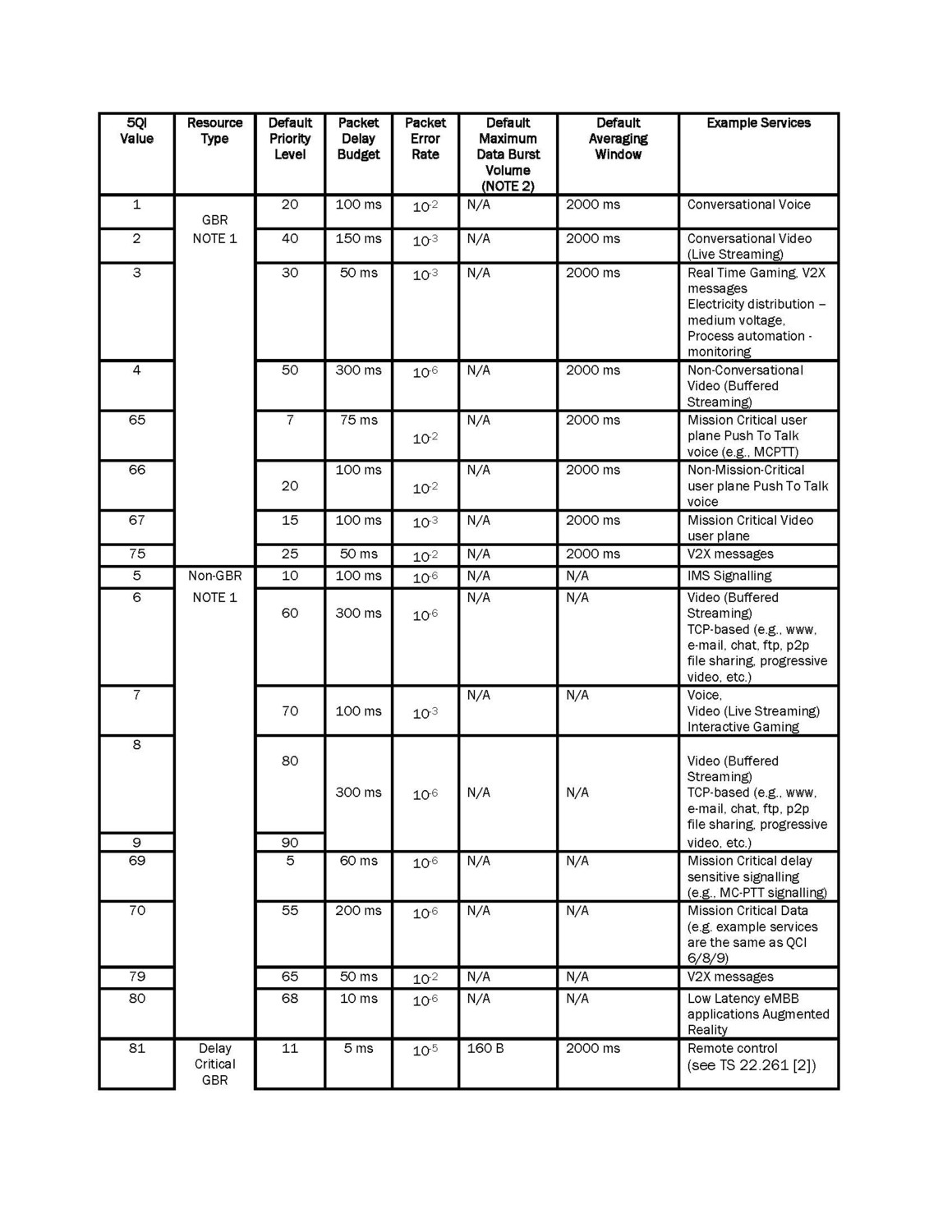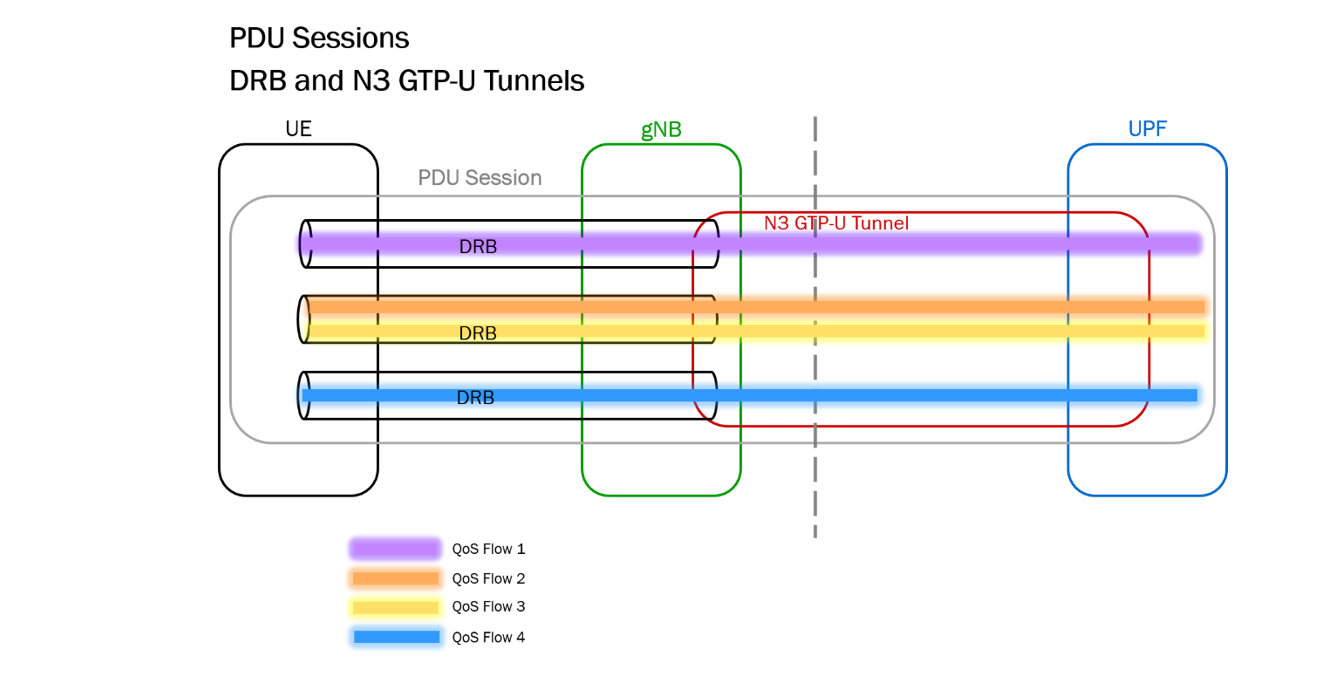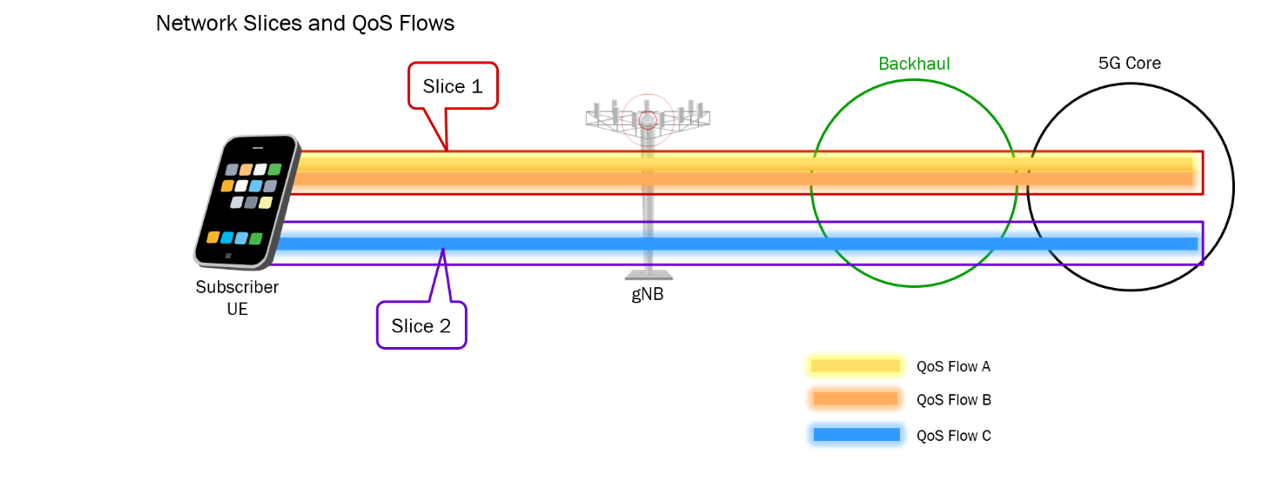
In 4G, LTE QoS is enforced at the EPS bearer level. In 5G, QoS is enforced at the QoS flow level.
4G LTE uses EPS bearers each assigned an EPS bearer ID. 5G uses QoS Flows, each identified by a QoS Flow ID (QFI). As with 4G LTE both non-GBR flows and GBR flows are supported in 5G, along with a new delay-critical GBR. 5G also introduces a new concept - Reflective QoS.

The QoS flow is the lowest level granularity within the 5G system and is where policy and charging are enforced. One or more Service Data Flows (SDFs) can be transported in the same QoS flow, if they share the same policy and charging rules (similar to an EPS bearer in 4G LTE). All traffic within the same QoS flow receives the same treatment.
There are several standardized 5QI values. The following table, from 3GPP TS 23.501, provides the mapping from 5QI to QoS characteristics.
Table 5.7.4-1: Standardized 5QI to QoS characteristics mapping:



Note: For standardized 5QI to QoS characteristics mapping, the table will be extended/updated to support service requirements for 5G, e.g., ultralow latency service.
QoS Flow to DRB and GTP-U Tunnel Mapping
In 4G LTE, there is a one-to-one relationship for an EPS bearer between the DRB (UE to eNB), the S1-U GTP-U tunnel (eNB to S-GW) and the S5-U tunnel (S-GW to P-GW).
In the 5GC, there is only a single user plane network function – the UPF – for transport of data between the gNB and the core. In 5G, there is a one-to-many relationship between the GTP-U tunnel on N3 and the DRBs on the air interface. Each QoS flow on N3 is mapped to a single GTP-U tunnel. The gNB may map individual QoS flows to one more DRBs. Therefore, a PDU session may contain multiple QoS flows and several DRBs but only a single N3 GTP-U tunnel. A DRB may transport one or more QoS flows.

The QFI that identifies the flow is carried in an extension header on N3 in the GTP-U protocol, using UL and DL PDU session information frames. The DL and UL PDU session information frame includes a QoS Flow Identifier (QFI) field for each packet.
The DL PDU session information frame includes the Reflective QoS Indicator (RQI) field to indicate whether the user plane reflective QoS is to be activated or not. This is only applicable if reflective QoS is activated.
QoS Flows and Network Slices
Each network slice is an independent part of the RAN, transport and core networks. Within each network slice, a subscriber may have one or more QoS flows. Any specific QoS flow only exists within that network slice.

Summary
5G builds upon and enhances QoS capabilities compared to 4G, and the terminology has changed. The standardized QoS options are extended as indicated in the 5QI to QoS characteristics mapping table, and additional QoS parameters are defined.
To stay connected on the latest technology updates, connect with us on Twitter and LinkedIn. You can also check out all of Award Solutions' courses at www.awardsolutions.com.
About the Author:
Paul Shepherd is a Senior Consultant for Award Solutions. Paul joined Award Solutions in 2012, and has over 28 years of experience in telecom. He has successfully developed and delivered emerging technology training to leading service providers worldwide. In his free time, Paul is also rumored to enjoy playing guitar, especially his Gibson ES Les Paul.
About Award Solutions, Inc.:
Award Solutions is the trusted training partner to the world's best networks. We help companies tackle new technologies by equipping their teams with knowledge and skills. Award Solutions invests heavily in technology, research, engineering, and labs to ensure our customers make the most of their resource and network investments.
Award has expertise across all technologies that touch wireless: 5G, Artificial Intelligence, Machine Learning, Network Virtualization, Data Visualization, Data Manipulation, 4G LTE, and more.
